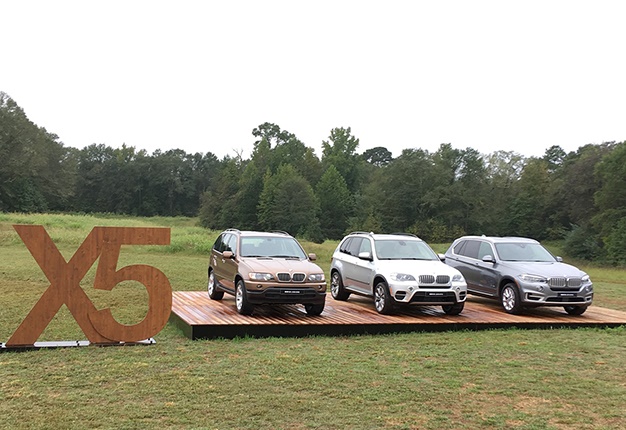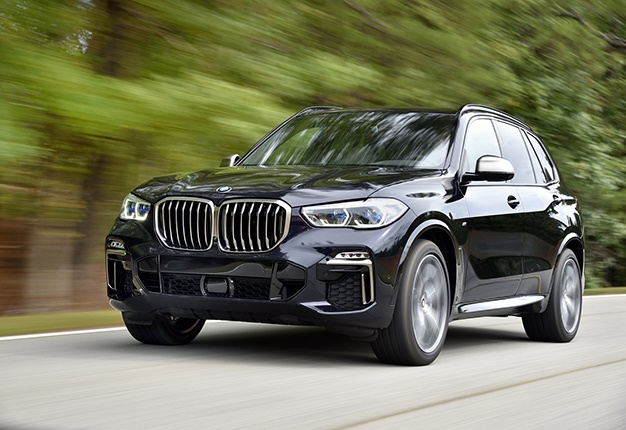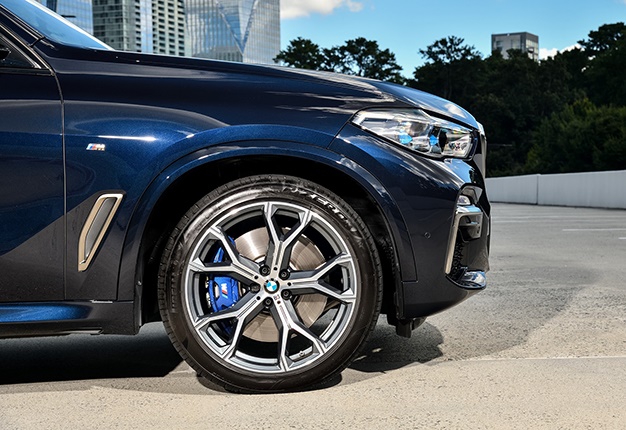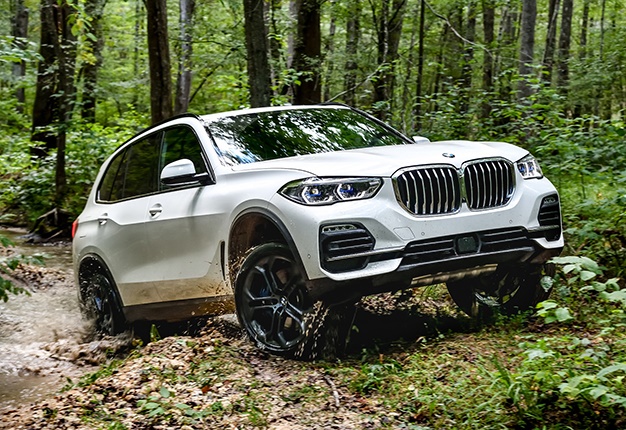Atlanta, capital of the state Georgia in the US, birthplace of Martin Luther King Jnr, home of Coca-Cola, the world headquarters of CNN, and the world’s busiest airport, is often called a "city in a forest", with even its main street named after a tree.
What is confusing is that 75 roads in the host city of the 1996 Olympic Games are called Peachtree Avenue or Road and, ironically, the name apparently stems from "pitch" tree, a description for pine – also found in abundance in Bavaria, Germany, home to BMW AG.
A history lesson
Interestingly, Atlanta is also a sister city to Nuremberg in Bavaria, roughly 250km from Munich – about the same distance from BMW’s Plant Spartanburg plant in Greer, South Carolina, to Atlanta. Enough trivia.
READ: Here's how much the new BMW X5 will cost in SA
We were in Atlanta to meet the latest successor to the founding father of the BMW X model family, the model which launched the Sports Activity Vehicle (SAV) category almost twenty years ago, and the longstanding market leader in the premium all-wheel-drive segment.
Until now, BMW has sold more than 2.2 million examples of the BMW X5 across three model generations. And according to the German automaker the fourth generation X5 "puts down another marker in terms of design and technology" in this category.
The order books for the new X5 is now open, and indicative pricing for the two models (standard, without any options or extras) destined for our shores are; X5 xDrive30d – R1 194 296, and X5 M50d – R1 502 582.
Image: BMW
Some technical highlights of the newcomer, making its official debut at the Paris Motor Show this week, include a new petrol-driven V8 engine in the X5 xDrive50i (not available for Europe or South Africa), as well as a host of chassis systems – such as two-axle air suspension, Integral Active Steering and a bespoke Off-Road package – that make their debut in a X model.
Image: BMW
Other new features include a significantly expanded suite of driver assistance systems and the unveiling of the BMW Live Cockpit Professional (fitted as standard) which now allows the display and control system to be geared even more precisely to individual driver needs.
The new, bigger and better X5 will also be built at Spartanburg, a centre of X model expertise that also handles production of the X3, X4, X6 – and will soon add the new X7 to its roster as well. The worldwide market launch of the new X5 is scheduled for November, and South Africa is one of the first countries to then receive the right-hand drive version.
New design language
Senior Vice President of BMW Group Design, Adrian van Hooydonk, described the styling of the latest X5 as embodying the origins of the BMW X family and, in its fourth generation, sending out its most powerful message yet in terms of presence and modernity. "It defines a new X design language – robust, clear and precise," he added.
Image: BMW
At the front, the most striking feature is the large grille with single-piece surround. However, in my view the huge, imposing signature kidneys make the newcomer appear more constricted and narrower– detracting from the forceful, wide stance so well executed in its predecessor.
It now comes standard with LED headlights, while BMW Laserlight non-dazzling spotlight with Adaptive LED Headlights can be specified as an option. Blue x-shaped elements, which split up the hexagonal light sources inside the twin headlights, make a distinctive visual statement.
Image: Ferdi de Vos
The imposing appearance of the new X5 is further aided by a 36mm increase in vehicle length (to 4 922mm), an extra 66mm of width (now 2 004mm) and a 19mm increase in height (to 1 745mm). Its wheelbase (2 975mm) is now also 42mm longer than that of its predecessor, assuring generous levels of space for passengers and their luggage.
While retaining the hallmark proportions of an SAV, clean surfacing and precise lines accentuate its robust, yet elegant poise. It now has lightly hexagonal wheel arches, a dynamically sweeping roofline and a precise character line on the flanks.
The rear lights, which extend well into the flanks, feature LED technology and a three-dimensional glass cover design, while diagonal accent lines give the rear a brawny appearance.
Model variants
As previously, the X5 is available in xLine and M Sport model variants, as well as with options from BMW Individual. The xLine model has kidney grille bars in aluminium matt, an under-guard, roof rails and aluminium-type side window surrounds, plus other accents in pearl-effect chrome, to accentuate its off-road character (more about that later).
The M Sport specification has the wheel arch trim, bumper trim, rear under-guard and side skirts painted in body colour, while those outsize air intakes at the front, aluminium matt kidney grille bars, roof rails, side window surrounds and other trim elements in high-gloss black hints at its dynamic potential.
Image: Ferdi de Vos
The SAV now comes standard with 18-inch wheels, while the xLine model has unique 19" alloys, with 20" M twin-spoke design wheels selected for the M Sport models and besides further variants, 22" wheels are now optionally offered – a first for a BMW model.
Also, model-specific options from BMW Individual – such as Sunstone metallic paint finish, extended BMW Individual high-gloss Shadow Line, tinted headlights and rear lights, painted BMW Individual brake callipers and special 21" light-alloy wheels – are available from launch.
Live Cockpit Professional
Inside, the clear structure of the instrument panel and centre console exudes a feeling of space. The new design and Control Display mimic the digital type layout already prevalent in Mercedes-Benz and Audi models.
It optimises driver involvement, but personally, I didn’t like the slightly raised seating position, probably because I’m used to choosing the lowest possible driving position.
The latest-generation BMW Live Cockpit Professional comprises a high-resolution instrument cluster behind the steering wheel and a Control Display, both measuring 12.3 inches across, running the latest BMW Operating System 7.0, Its redesigned graphics display now warrants a part-view of the navigation map in the instrument cluster (a la Audi MMI) and the main menu in the Control Display is now spread over up to ten pages.
The system is intuitive, with a choice between touch control or using the Control Display, the iDrive Touch Controller, the controls on the steering wheel, voice control or BMW gesture control.
However, be careful to become too animated while chatting in the car, as you may suddenly find the sound system blaring at you full blast, or the aircon operating at its highest setting.
Other useful attributes of the system are an adaptive navigation system, a hard-drive-based multimedia system with 20 GB of memory and two USB ports, plus Bluetooth and WiFi interfaces. It can also detect the driver automatically to activate personal settings and provide access to a variety of vehicle apps, including receiving regular updates for navigation maps.
A selection of digital services is also offered under the Connected Package Display and control system, BMW Connected and ConnectedDrive. At the heart of it all is the Open Mobility Cloud, which allows the personal mobility assistant to interface the car with the customer’s digital devices.
The centre console hosts the Controller, a newly designed transmission selector, the start/stop button – available with optional glass detailing, as in our test models, which I found to be really OTT and pretentious – and controls for the air suspension settings and off-road modes (if specified).
Interior amenities
In true BMW fashion, the roomy interior is well-appointed with an exclusive ambience. Materials include a Vernasca variant for the standard leather upholstery and other features include multi-function seats, cooled and/or heated cupholders, a four-zone air conditioning system and Dynamic Interior Lighting.
The new Panorama glass roof Sky Lounge needs special mention as it generates a special aura in the dark, with a LED light spread evenly across the glass surface to illuminate more than 15,000 graphic patterns to emulate a starlit sky.
Project leader for the new G05 X5, Johann Kistler, was particularly proud of the exclusive and powerful Bowers & Wilkins Diamond Surround Sound System with 20 speakers and 1 500-watt output (expected to be available as option from December) as well as the very nifty boot cover that can now be lowered electrically into the load compartment floor (also optionally available from December).
Luggage capacity can be increased from 650 litres to a maximum of 1 860 litres by folding down the 40:20:40 split rear seat backrests. And yes, as in its predecessor a third row of seats can be ordered as an option and can be specified with electric fore-and-aft adjustment. The new X5 also has a two-section tailgate that can be opened and closed automatically and hands-free if the optional Comfort Access is ordered.
Engines, dynamics
Based on the new Cluster Architecture (CLAR) platform shared with other models such as the new 5- and 7-Series, as well as the upcoming X6 and X7, the newX5 has a stiffer body shell with around 33% more torsional stiffness that better isolates noise, vibration and harshness – as we found on the leafy, well-kempt roads around Atlanta.
The newcomer is launched with a choice of two petrol and two diesel engines headed by the V8-powered X5 xDrive50i. This model, as well as the smaller xDrive40i, is not available to us (yet), but we will receive the two diesel derivatives – the BMW M Performance X5 M50d powered by a six-cylinder in-line diesel engine with no less than four turbochargers. and the xDrive30d, also with a six-cylinder inline unit but with a single turbocharger, in November.
Image: BMW
Both channel their power through an eight-speed Steptronic transmission and BMW’s xDrive intelligent all-wheel drive to all four wheels – on or off-road. With an output of 294kW at 4 400rpm and peak torque of 760Nm between 2 000 and 3 000rpm from its 3-litre diesel engine, the M50d felt indecently quick off the line, with linear power delivery from low down in the rev range.
Its multi-stage turbo system consists of two high-pressure and two low-pressure turbos that quickly builds up charge pressure – with over 450Nm available at just 1 000rpm. Driving normally, both low-pressure turbos and one of the high-pressure units are active, with the second high-pressure turbo only joining in over 2 500rpm.
Accelerate hard, and flaps adjust swiftly to bypass the low-pressure turbos, generating max pressure without delay. For even better efficiency, exhaust gas re-circulation is also employed. All this means that the 2-ton M50d darts from rest to 100km/h in only 5.2 seconds.
Image: BMW
Despite its potent performance, BMW maintains the combined fuel consumption of this M Performance model is around 7.2 litres/100 km with CO2 emissions of 190g/km.
At full tilt the M50d’s engine sounded more like a pedigreed petrol mill than a diesel, and despite its bulk it felt quite lithe and manageable in the corners, in part thanks to two-axle air suspension (BMW speak for adaptive air suspension now also at the front) – although due to the prevailing speed restrictions we did not have much chance to put its handling prowess to the test.
The two-axle air suspension allows vehicle height to be adjusted by up to 80mm at the touch of a button, but even so, we still felt the ride quality of the M-tuned derivative was quite hard in Sport mode.
The single-turbo xDrive30d, while not as wild as the M50d, surprised with its willingness. Delivering 195kW at 4 000rpm and 620Nm of torque from 2 000 to 2 500rpm it reaches 100km/h from rest in 6.5 seconds, while returning a combined consumption of just 6.8 litres/100km, equating to CO2 emissions of 179g/km, according to the men from Munich.
Its overall efficiency is also increased by the new, sportier shift characteristics of its Steptronic transmission with new torsion dampers and optimised hydraulic control to reduce converter slip.
Throw in the optimised power distribution from the latest gen xDrive system and electronic diff lock at the rear axle (available with the M Sport equipment line or the Off-Road package), Dynamic Damper Control and adaptive air suspension, and the xDrive30d excelled in the corners. It is certainly my favourite of the two.
The only let-down was its steering feel at low speeds; it felt too sensitive and artificial, probably due to an overload of electronic impulses from developments such as Integral Active Steering (rear-wheel steer), but at speed, it became more responsive.
Off-road package
Herr Kistler, who was also responsible for the development of the E39 and E60 5-Series, added the new chassis systems on the X5 enhances its off-road performance, sportiness and comfort.
We tried it with xDrive40i models equipped with the Off-Road package (offered in a BMW X model for the first time and available for all variants apart from the M50d), much like is now also available in the new Porsche Cayenne.
Besides under-guard elements, two-axle air suspension and rear differential lock, the package features special graphics in the instrument cluster and Control Display, and an extra button to select from four off-road driving modes (X Sand, X Rock, X Snow and X Gravel).
Image: BMW
The new system proved to be much better than the 4x4 setup in its predecessor, and a slippery track with thick mud in places posed no problem for the X5 -- even on 20-inch low-profile rubber.
It is clear the fourth generation X5 has been developed and re-engineered sufficiently, even by adopting some similar systems, to stand its ground against competitors such as the Mercedes-Benz GLE, new Porsche Cayenne, Audi Q7 and Jaguar F-Pace.
"The new X5, besides being bigger and more luxurious, has enhanced performance and handling, and is now even more versatile, with a significantly expanded array of driver assistance systems. It clearly demonstrates our commitment to taking comfort and safety to new heights," says Kistler.
BMW X5 xDrive30d
Engine: Six-cylinder in-line turbodiesel
Capacity: 2 993cc
Transmission: Eight-speed Steptronic, xDrive all-wheel drive
Output: 195kW at 4 000rpm,
Max torque: 620Nm at 2 000 – 2 500rpm
Acceleration (0 – 100km/h): 6.5 seconds
Top speed: 230km/h
Fuel consumption combined: 6.8 – 6.0l/100km
CO2 emissions combined: 179 – 158 g/km
BMW X5 M50d
Engine: Six-cylinder, in-line quad turbo diesel
Transmission: Eight-speed Steptronic, XDrive all-wheel drive
Capacity: 2 993cc
Output: 294kW at 4 400rpm
Max torque: 760Nm at 2 000 – 3 000rpm
Acceleration (0 – 100km/h): 5.2 seconds
Top speed: 250km/h
Fuel consumption combined: 7.2 – 6.8l/100 km
CO2 emissions combined: 190 – 179 g/km




 Publications
Publications
 Partners
Partners

















